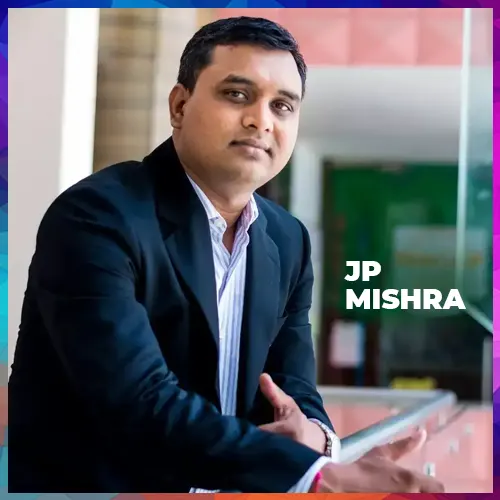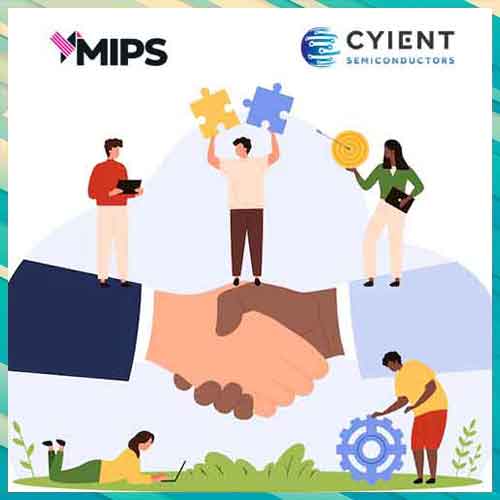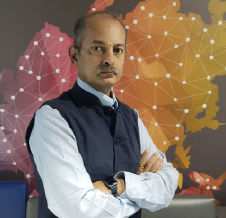Can Online and Traditional Channel co-exist?
2013-12-20
Vendors give the thumbs-up to a distribution arrangement in which they equally support both online and traditional channel for pursuing their customers in a large market like India. Does this mean loss of faith in Channel and its existing business models by vendors?
The Indian retail industry has undergone considerable changes.The proliferation of the internet and mobile technologies have reshaped consumer buying pattern to a large extent with online retail having transformed the way people shop for products and services. Consumers have also become more discerning and conduct extensive research before making a purchase decision.
Anantharam Varayur, MD - Webcom Information Technology feels that traditional resellers who have been catering to their own set of handful of customers from past 10-15 years are bearing the brunt of this rise in the new age channels.“Most of the vendors are reaching out to online stores or LFRs because they feel that these outlets can reach to large customer base by giving huge discounts, special pricing etc. As a result a customer who buys from a reseller wants him to match the price with the online pricing and give the same service as offered by the online store. Even though the reseller is not loosing the customer directly, he knows he has to make choice of either walking away from the deal or give it at a reduced margin and retain the customer. This means loss of business for the reseller and others like him,” he replies.
 |  |  |  |
| Vishal Parekh, Marketing Director, Kingston Technology – India | Anantharam Varayur, MD - Webcom Information Technology | Girish Mamtani, Country Head, ViewSonic, India | Vineet Mahajan, Head, Display Solutions, Panasonic India |
Ananth further points out that while till some years back they used to play the role of consultants to customers, today with so much of data available in internet this role is gradually diminishing.“Hence a partner has to work with his customers with their annual IT budget and must ensure to get cumulative profits from various products and services in the entire year,” he cautions.
But vendors have a different view altogether on the current situation. SaysVishal Parekh, Marketing Director, Kingston Technology – India, “We understand that the business in India is dynamic and hence we formulate pricing strategies accordingly. Having said that, Kingston is a Channel friendly company and they form an important part of our business model. We also have our reach to LFRs and online stores but engage with them through our distribution network. Not only that, we monitor these prices throughout the network.”
According to S. Rajendran, Chief Marketing Officer, Acer India,in order to maintain a level-playing field in line with the dynamic market and staying relevant to its consumers, Acerensures to set a stable MOP across all geographies and categories.
Todays IT business from partner prospective is getting highly competitive and while a lot of factors are responsible for winning or loosing a business, price plays a pivotal role. It is difficult for partner not to be a victim for such disparity as the number of layers of prices by OEM is increasing. “Traditionally the discounting was cleared by OEM's and regional/national distributors were only logistical partners, but now the prices also depends on the strength of Distributors and margins are the most effected area for partner business,”observesTejas Mehta, Director - Parth TechnoComm Solutions.
Girish Mamtani, Country Head, ViewSonic, Indiamaintains that the current price variation is more because of fluctuation in Rupee vis a vis USD. The JAS months particularly have been harsh for import business, leading to an unprecedented price fluctuation and creating an uncertainly in price stability. This also has led to market contracting, the effects of which will be visible in OND months. On the coming up of new forms of channel, he says,“LFRs are not particularly inclined to buy the categories we are present in i.e. Desktop monitors and Projectors. While the traditional channel still pitch for our typical low end products, the SIs and VARs play a key role in the Value added models. We are extremely focused on High end of the stream where we have the most comprehensive range of products to cater to our clients.”
Priyesh Jain, Founder, Shopuli.com, an e-commerce store does confirm that theyare competing with the traditional retailers and partners but over the years the eCommerce industries has been able to fill a gap of unavailability of niche products in lot of regions and areas. “I believe a lot of offline stores will go online and lot of online stores will go offline because there will always be audience on both sides to be captured,” he affirms. The low entry cost and almost nonexistent entry barriers have spurted the sudden rush in eCommerce websites over a few years. Also Indian demographic with a high young population which has the mindset to buy online and a credit card in hand has also contributed to this sudden rise.
To this, Rajesh Nahar, CEO & Co-founder, Cbazaar adds, “Offline is a gateway to the online. It is not ‘Or’, it is about ‘And’. The customers can walk-in to an offline outlet, consume the services there (or try out the services there) and move on to online. The consumer can also experience the intangible at this outlet and get closer to the imagery that he or she has for that brand. These offline outlets will be the touch-points while delivering the services.”
 |  |  |  |
| S. Rajendran, Chief Marketing Officer, Acer India | Peter Chang, Regional Head - South Asia, Country Manager – System Business Group, ASUS India | Tejas Mehta, Director - Parth TechnoComm Solutions | Anwar Shirpurwala, Executive Director, MAIT |
Vendors Committed to Partners as always…
The furore created by the Channel fraternity over its loss of business to online stores raises the question of whether vendors have lost faith in Channel given their age-old business practices and their importance gradually waning in the eyes of vendors. Girish asks questioningly, “Why should a vendor shy from new channels? It is absolutely possible to create a healthy ecosystem for all to exist.” To this he adds, “Sometimes there does exist huge pressure from LFRs and ECom to offer them best deals but I guess that is best considered when products are at phase out stage. As a vendor we would like to create demand for the product in general and move it from all possible channels. With surety of margins, all will coexist.”
“We believe in promoting and growing with our channel network. Our channel is first to receive all our product pricing updates. LFRs and e-stores complement our channel and we keep a check on the availability and prices of our products. Also, the product dealings take place through our channel which helps avoid price disparity,” says Vishal.
For Panasonic it is not a loss of faith in channel but exploring new channels to enhance its business. “Today, in metros most of the families go to LFRs to compare the various brands under the same roof.This eases their choice of purchase.On the contrary, e- commerce attracts the buying pattern of youth and teenagers who rely on internet to trigger their buying process,” says Vineet Mahajan, Head, Display Solutions, Panasonic India.
Peter Chang, Regional Head - South Asia, Country Manager – System Business Group, ASUS India states that Asus does not want to lose the Channel at the cost of online stores. It is and will form an integral part of their existence in Indian market, though it does have business tie-ups with e-commerce companies like flipkart and eBay. “We are trying to strike a balancerather. We have designed our products in such a way that both our traditional and online partners can co-exist. But whatever might be the case, we will continue to support our Channel in every possible way.”
Rajendran has a different say on this. According to him various LFRs along with e-commerce stores have remarkably transformed the very perception of retail. “While this has resulted in changing consumer behaviour significantly, it has also caused vendors to relook at their GTM strategies. However, there is still a large section of consumers in the vast non-metro expanse with whom we connect through our valued channel partners,” he says.
Agrees Anwar Shirpurwala, Executive Director, MAIT, “This is a new space of retailing and we should all welcome this thing, as long as the business is conducted in an ethical manner and a level-playing field created for all. This should alarm the Channel instead of creating dismay amongst them of how important it has become to modify their old business model.” He cites the simple example of how some years back when computers were first introduced and many prophesied the possible risk of a cut-down of manpower as a result of computerization of many of the works. But that did not happen. Similarly the current wave of e-commerce growth should be seen as a business opportunity by the Channel rather than a threat.
Channel cannot be wiped out…
Traditional channel has been playing a very important role when it comes to the distribution strategy of a brand.In fact,for many vendors it still is the only medium that connects them to the tier-2 markets.They are equally important as they instigate better relationship with the end customers. “The traditional channel can be restored by offering better after sales services and complete solution to the end customer,” states Vineet.
 |
| Rajesh Nahar, CEO & Co-founder, Cbazaar |
 |
| Priyesh Jain, Founder, Shopuli.com |
For Kingston similarly, the channel has been important and will remain to be. “The Indian market is vast and we follow a dynamic pricing strategy for their products. In India, the channel will only grow and mature, both in terms of volume and business. We do not treat LFRs and e-commerce stores as a different entity but they form a part of our channel network,” points out Vishal.
“At Acer, we have always followed an indirect business model and have consistently maintained a close integrated relationship with our partners across the country. We will continue to support our partners by providing a level-playing field in terms of discount offers, price, SKU availability, and service support. Moreover, we will also help them improve their skills and knowledge by conducting regular training programs. We are confident that our partners will continue to help us grow our market presence across India,” says Rajendran.
But this is the age of Change. While technology has reshaped the retail market significantly, traditional retailers need to adopt newer methods to win shopper loyalty that includes introducing differentiated in-store experiences, enhanced service models and new loyalty program benefits in order to provide consumers a full-fledged experience.It is however true that unless they are assured of suitable margins there is no way a channel will crank up to its optimum level. Traditional channel is best connected to an end user through better service delivery and as long as there is not much disparity in prices at end consumer levels,traditional channel will continue to coexist peacefully. And as Girish puts it that neither LFRs can handle all products nor Ecoms can sell solutions to an individual buyer, implying that traditional channels concentrated in geography will fill in the gaps whenever and wherever necessary.
However it is imperative for all Partners to keep changing with time, especially upgrade themselves as newer technology is introduced. “Innovation and integration are the only aspects that can help partners survive in the new scheme of things,” opine Tejas. “A change is sales strategy or integration of larger projects or higher technology expertise can help a partner differentiate themselves from competition,” he says.
samrita@varindia.com
See What’s Next in Tech With the Fast Forward Newsletter
Tweets From @varindiamag
Nothing to see here - yet
When they Tweet, their Tweets will show up here.




























